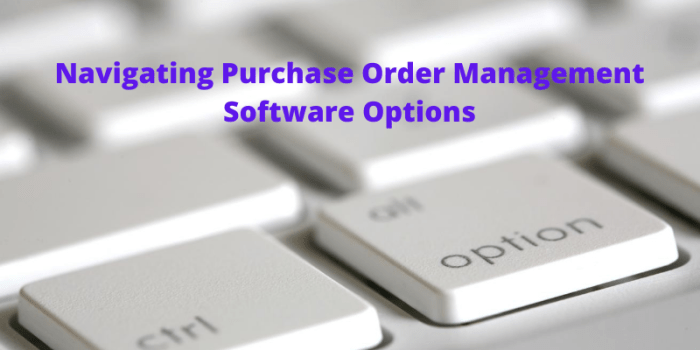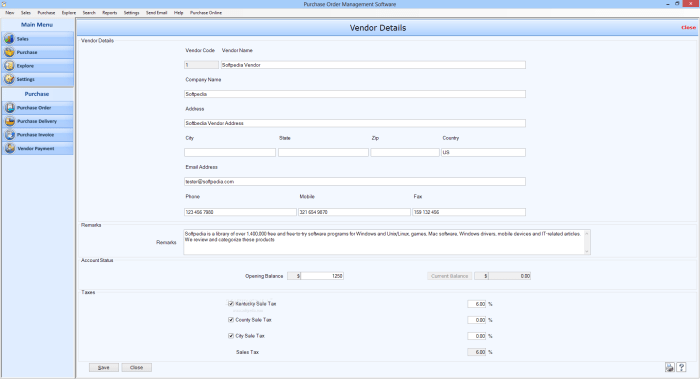Software for purchase management is revolutionizing how businesses handle procurement. Efficient purchase management software offers significant advantages, from streamlined workflows and reduced administrative burdens to enhanced visibility and improved cost control. These systems automate repetitive tasks, integrate with existing accounting software, and provide real-time data on spending patterns, enabling informed decision-making and strategic planning. The benefits extend to improved supplier relationships and reduced risk of errors and delays.

Source: quoteplanr.com
Choosing the right software depends on factors such as business size, industry, and specific needs. Key features to consider include purchase order generation, inventory management, approval workflows, reporting and analytics, and integration capabilities. A well-implemented system can significantly contribute to a company’s bottom line and overall operational efficiency.
Efficient purchase management is the backbone of any successful business, regardless of size or industry. From small startups to large corporations, controlling purchasing processes, tracking expenses, and ensuring timely delivery of goods and services is crucial for profitability and growth. Manually managing purchases can quickly become overwhelming, leading to errors, delays, and ultimately, lost revenue. This is where purchase management software steps in, offering a powerful solution to streamline operations and optimize the entire procurement cycle.
Understanding the Importance of Purchase Management Software
In today’s fast-paced business environment, relying on spreadsheets and email chains for purchase management is simply unsustainable. Purchase management software offers a centralized system for managing all aspects of the purchasing process, from requisition to payment. This translates to several key benefits:
- Improved Efficiency: Automate repetitive tasks like purchase order creation, approval workflows, and invoice processing, freeing up valuable time for your team to focus on strategic initiatives.
- Reduced Costs: Minimize errors, negotiate better prices with suppliers, and optimize inventory levels, leading to significant cost savings.
- Enhanced Visibility and Control: Gain real-time insights into your purchasing activities, track spending, and identify areas for improvement.
- Better Compliance: Ensure adherence to internal policies and external regulations, reducing the risk of non-compliance penalties.
- Improved Collaboration: Facilitate seamless communication and collaboration between different departments involved in the purchasing process.
- Data-Driven Decision Making: Leverage detailed reporting and analytics to make informed decisions about purchasing strategies.
Key Features of Effective Purchase Management Software
While the specific features may vary depending on the software solution, several core functionalities are essential for effective purchase management:
Purchase Requisition Management, Software for purchase management
The process begins with a purchase requisition, a formal request for goods or services. Good software allows for easy requisition creation, routing for approvals, and tracking of the request’s status. This ensures that all purchases are properly authorized and documented.
Purchase Order Generation and Management
Once a requisition is approved, the software automatically generates purchase orders (POs). These POs contain all necessary information, such as item details, quantities, prices, and delivery dates. The system tracks the PO’s lifecycle, from creation to delivery and payment.

Source: procuredesk.com
Supplier Management
Effective supplier management is crucial for efficient purchasing. The software should allow you to maintain a database of approved suppliers, track their performance, and easily communicate with them. Features like supplier ratings and performance history are invaluable.
Inventory Management Integration
Many purchase management systems integrate with inventory management software. This integration ensures that purchase orders are aligned with inventory levels, preventing stockouts and overstocking. Real-time inventory visibility improves forecasting accuracy and optimizes supply chain efficiency.
Invoice Processing and Payment
Automating invoice processing significantly reduces manual work and errors. The software can match invoices to purchase orders, verify accuracy, and route them for approval before payment. Integration with accounting systems streamlines financial reporting.
Reporting and Analytics
Comprehensive reporting and analytics are vital for understanding purchasing trends, identifying cost-saving opportunities, and improving overall efficiency. The software should provide customizable reports on spending, supplier performance, and other key metrics.
Workflow Automation and Approvals
Automating approval workflows ensures that purchases are processed efficiently and in compliance with company policies. The software can route purchase requisitions and invoices to the appropriate approvers, tracking their status and ensuring timely processing.
Choosing the Right Purchase Management Software
Selecting the right software depends on your specific needs and budget. Consider the following factors:
- Scalability: Choose software that can grow with your business.
- Integration Capabilities: Ensure seamless integration with your existing accounting, ERP, and inventory management systems.
- User-Friendliness: The software should be intuitive and easy for your team to use.
- Customer Support: Reliable customer support is essential for addressing any issues that may arise.
- Security: The software should have robust security measures to protect sensitive data.
- Cost: Consider both the initial cost and ongoing maintenance fees.
Popular Purchase Management Software Options
Numerous vendors offer purchase management software, catering to various business sizes and needs. Some popular options include (but are not limited to): Coupa, SAP Ariba, Oracle Procurement Cloud, and many others tailored for specific industries or business sizes. Researching and comparing features and pricing is crucial before making a decision.
Frequently Asked Questions (FAQ): Software For Purchase Management
- Q: What are the benefits of using purchase management software?
A: Improved efficiency, reduced costs, enhanced visibility and control, better compliance, improved collaboration, and data-driven decision-making. - Q: How much does purchase management software cost?
A: Costs vary widely depending on the vendor, features, and number of users. Some offer subscription-based models, while others have one-time purchase options. - Q: Can purchase management software integrate with my existing systems?
A: Many systems offer integration capabilities with accounting, ERP, and inventory management software. Check the vendor’s specifications to ensure compatibility. - Q: How long does it take to implement purchase management software?
A: Implementation time varies depending on the complexity of your business processes and the software’s features. Expect some initial setup and training time. - Q: What are the key features to look for in purchase management software?
A: Purchase requisition management, purchase order generation, supplier management, inventory integration, invoice processing, reporting and analytics, and workflow automation.
Conclusion
Implementing purchase management software is a strategic investment that can significantly improve your business’s efficiency and profitability. By automating tasks, improving visibility, and facilitating better collaboration, you can optimize your procurement processes and gain a competitive edge. Take the time to research your options, consider your specific needs, and choose a solution that aligns with your business goals.
Investing in the right software can pave the way for a more streamlined, efficient, and successful future.
References
While specific software recommendations are avoided to maintain objectivity, general information on procurement best practices can be found on sites like the Institute for Supply Management (ISM): [https://www.ismworld.org/](https://www.ismworld.org/)
Call to Action
Ready to streamline your purchasing process and unlock significant cost savings? Contact us today for a free consultation to discuss your needs and explore the best purchase management solutions for your business!
In conclusion, adopting software for purchase management represents a strategic investment for businesses of all sizes. By automating processes, enhancing visibility, and improving control over spending, these systems offer a significant return on investment. Careful consideration of specific needs and available features is crucial for selecting the optimal solution, ensuring a seamless transition and maximizing the benefits of streamlined procurement.
The result is a more efficient, transparent, and cost-effective purchasing process.
Frequently Asked Questions
What are the typical costs associated with purchase management software?
Costs vary widely depending on the features, vendor, and licensing model (subscription, perpetual license). Expect a range from free, basic options to several thousand dollars annually for enterprise-level solutions.
How long does it typically take to implement purchase management software?
Implementation time depends on the software’s complexity, the size of the organization, and the level of customization required. It can range from a few weeks to several months.
What types of training are usually provided with purchase management software?
Most vendors offer training, ranging from online tutorials and documentation to in-person workshops and dedicated support staff. The level of training provided varies depending on the software and the vendor.

Source: softpedia.com
Can purchase management software integrate with my existing accounting system?
Many purchase management software solutions offer integration with popular accounting systems. It’s crucial to check compatibility before purchasing.